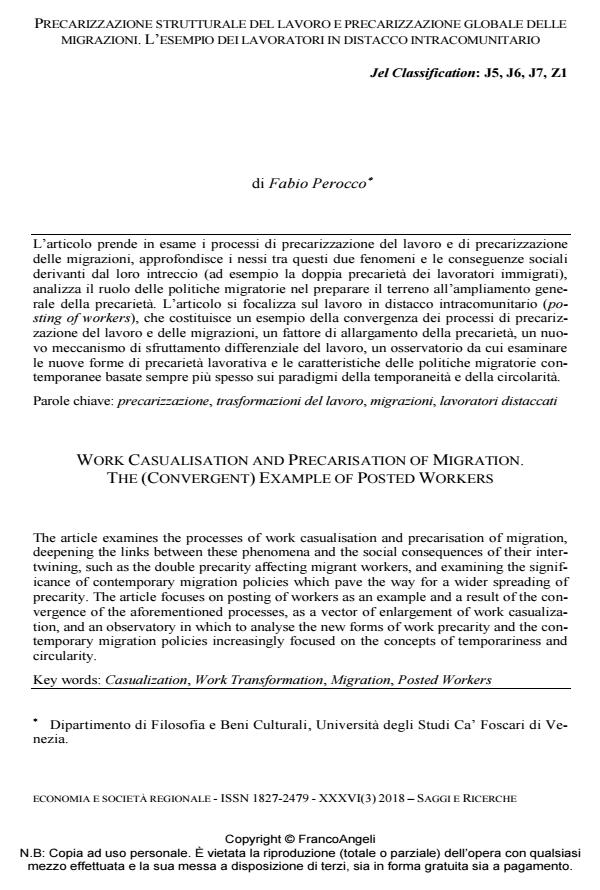Work casualisation and precarisation of migration. The (convergent) example of posted workers
Journal title ECONOMIA E SOCIETÀ REGIONALE
Author/s Fabio Perocco
Publishing Year 2018 Issue 2018/3
Language Italian Pages 22 P. 132-153 File size 468 KB
DOI 10.3280/ES2018-003011
DOI is like a bar code for intellectual property: to have more infomation
click here
Below, you can see the article first page
If you want to buy this article in PDF format, you can do it, following the instructions to buy download credits

FrancoAngeli is member of Publishers International Linking Association, Inc (PILA), a not-for-profit association which run the CrossRef service enabling links to and from online scholarly content.
The article examines the processes of work casualisation and precarisation of migration, deepening the links between these phenomena and the social consequences of their intertwining, such as the double precarity affecting migrant workers, and examining the significance of contemporary migration policies which pave the way for a wider spreading of precarity. The article focuses on posting of workers as an example and a result of the convergence of the aforementioned processes, as a vector of enlargement of work casualization, and an observatory in which to analyse the new forms of work precarity and the contemporary migration policies increasingly focused on the concepts of temporariness and circularity.
Keywords: Casualization, Work Transformation, Migration, Posted Workers
- Trabajadores desplazados, mano de obra barata en Europa Rafael Viruela Martínez, in Sociología del Trabajo /2020 pp.97
DOI: 10.5209/stra.68690
Fabio Perocco, Precarizzazione strutturale del lavoro e precarizzazione globale delle migrazioni. L’esempio dei lavoratori in distacco intracomunitario in "ECONOMIA E SOCIETÀ REGIONALE " 3/2018, pp 132-153, DOI: 10.3280/ES2018-003011